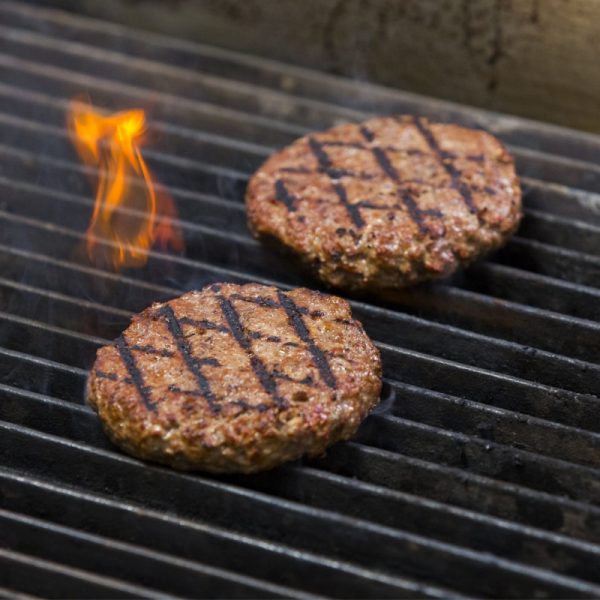
The Genetics of the Impossible Burger™
The Impossible Burger™ made its presence known on a whopping scale in Summer 2019, as Burger King restaurants nationwide debuted the Impossible Whopper. Burger King claims the Impossible Whopper, which contains no meat, is indistinguishable from its beefier cousin. The company is so confident in the claim they even offered a special deal to let people try the two side-by-side.
 What makes the self-proclaimed king of burgers so confident in the Impossible Whopper? It all comes down to a molecule called heme.
What makes the self-proclaimed king of burgers so confident in the Impossible Whopper? It all comes down to a molecule called heme.
Let’s be clear, there are a few different approaches to replacing traditional meat farming without giving up on the burger. Beyond Meat created a plant-based burger that derives a fleshy color from a combination of beet powder and annatto. Meanwhile scientists all over the world have worked on growing meat from animal cells in lab environments, though “cultured meat” still faces significant hurdles in large-scale production and no one has gotten the flavor down just yet. That’s to say nothing of winning over the general public.
Trying to best the traditional meat burger with a more sustainable option is a common goal, but the Impossible Burger uses genetics to take an uncommon approach.
What’s heme got to do with it?
Traveling through the bloodstream, heme collects oxygen from your lungs and delivers it to the rest of your body. The heme molecule is rich in iron, and according to the folks at Impossible Foods, it’s what makes meat taste like meat. Animal muscles are rich in heme.
Impossible Foods Founder and CEO Pat Brown says in a company video on the importance of the molecule, “The craving for meat is really a craving for heme and the iron and protein it represents in the diet.”
When the folks at Impossible Foods set out to make a burger, they didn’t want to use any actual meat, so they looked for the best way to imitate meat with plant products. Here are the ingredients for the Impossible Burger that the company lists on its website:
Water, Soy Protein Concentrate, Coconut Oil, Sunflower Oil, Natural Flavors, 2% or less of: Potato Protein, Methylcellulose, Yeast Extract, Cultured Dextrose, Food Starch Modified, Soy Leghemoglobin, Salt, Soy Protein Isolate, Mixed Tocopherols (Vitamin E), Zinc Gluconate, Thiamine Hydrochloride (Vitamin B1), Sodium Ascorbate (Vitamin C), Niacin, Pyridoxine Hydrochloride (Vitamin B6), Riboflavin (Vitamin B2), Vitamin B12.
Attentive readers may have noticed Soy Leghemoglobin in that ingredient list. It’s the source of heme that Impossible Foods uses. Soybeans are a legume, like lentils, beans and peas. Leghemobglobin gets its name from the legume genus, but its flavor, according to the company, mimics meat impressively.
To produce the leghemoglobin on a mass scale, the scientists at Impossible Foods employ genetic engineering, which is how the topic wound up here on Shareable Science.
Finding the Flavor
If you want to make plant matter taste like meat, you have to find a source for the flavor. Scientists at Impossible Foods settled on the leghemoglobin found in the nodules of soybean roots. If you cut open one of these nodules, you’ll find a pink, fleshy substance. The meaty coloring comes from heme, just like in muscle tissue. The people at Impossible Foods determined that leghemoglobin in plant matter creates a similar taste to heme in meat.
Once the company settled on a source of heme, they just needed a way to collect it.
The entire process to make the Impossible Burger could be carried out by harvesting nodules from soybean roots, but brewing that same heme with yeast proved more efficient for the company.
Brewing Heme
The process Impossible Foods uses to produce heme has more in common with the way a brewer makes beer than the way a butcher prepares a steak. That’s because the company gets yeast (specifically Pichia pastoris) to make the heme for them. Impossible Foods uses genetic engineering to introduce the genetic instructions for leghemoglobin production and assembly into the yeast’s own genome using recombinant DNA technology.
We outline this process in one of our Biotech Basics articles:
To make a recombinant organism, the gene of interest must first be isolated from the initial donor organism. To isolate the gene, scientists use restriction enzymes, proteins that can be thought of as molecular scissors that cut DNA at specific nucleotide sequences. The restriction enzymes cut the DNA on either side of the gene of interest. The DNA fragment containing the gene is then ligated (fused) into a different piece of DNA called a vector. The vector serves as a mechanism to carry the gene of interest into the host. It often includes additional genetic information such as selectable markers and genetic signals that control when and where it will be expressed. The vector is then introduced into a single host cell. From this cell, an entire organism, plant or animal is grown.
Bottom line, the DNA instructions used to produce leghemoglobin get inserted into yeast. The yeast then uses those instructions and produces heme. The leghemoglobin the yeast produces is identical in every way to the leghemoglobin found in soybean nodules. This means that while the yeast are genetically modified, the leghemoglobin incorporated in the Impossible Burger is not.
The process itself isn’t new. Insulin is made by E. coli engineered through a similar recombinant DNA-based process. Yeast has also been engineered to produce all kinds of medical applications, including the production of opioids for cough suppression and tumor reduction, like we outlined in our 2018-2019 Guidebook. (pg. 10)
Impossible Foods says by “brewing” their heme using genetically engineered yeast they can reduce their environmental impact, claiming their burger requires 87% less water and 96% less land, as well as producing 89% fewer GHG emissions and 92% less aquatic pollutants.
The impossible made possible
Burger King’s promotions show the company is confident you’ll be impressed if you try the Impossible Whopper alongside the classic one. We’ll see how that plays out with the public.
Regardless of the outcome, the Impossible was made possible through the science of genetic engineering.
To schedule a media interview with Dr. Neil Lamb or to invite him to speak at an event or conference, please contact Margetta Thomas by email at mthomas@hudsonalpha.org or by phone: Office (256) 327-0425 | Cell (256) 937-8210
Get the Latest Sharable Science Delivered Straight to Your Inbox!
[gravityform id=19 title=false description=false ajax=true][wprpw_display_layout id=8]




